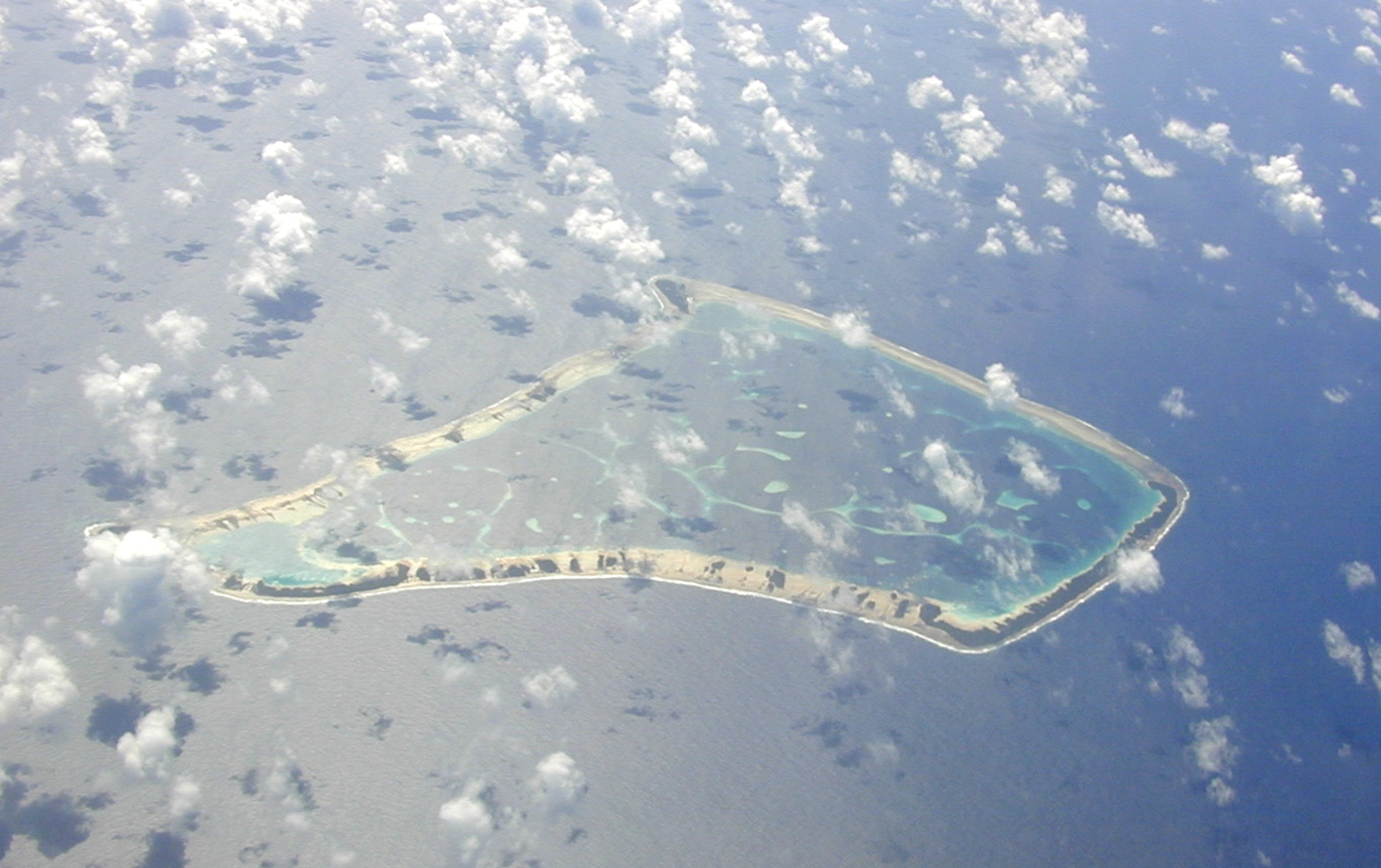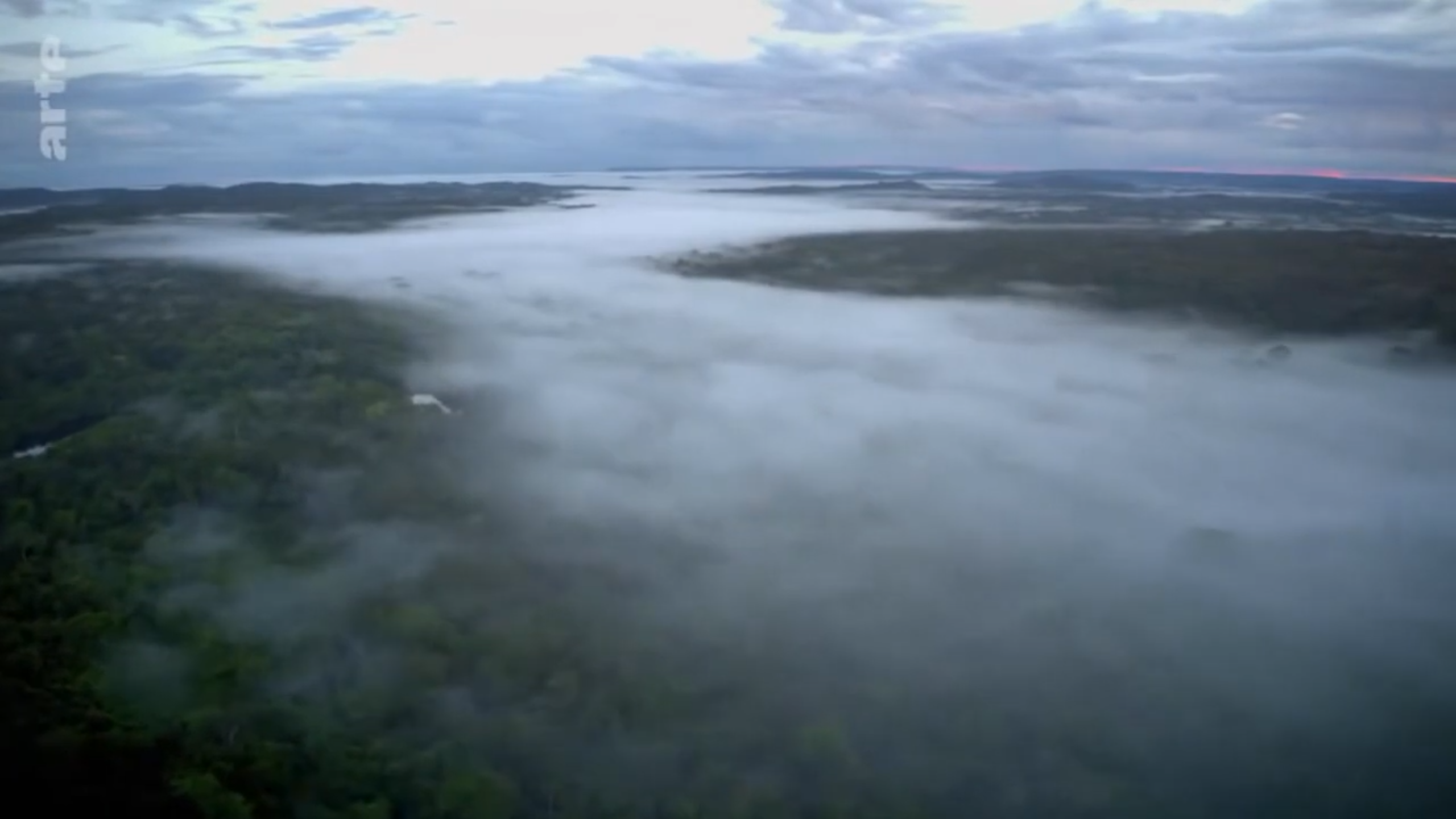Fascinating: “Coral reefs produce a volatile substance called dimethylsulphide or DMS which oxidizes in the atmosphere to produce cloud condensation nuclei (CCN). These are tiny sulphur aerosol particles around which water vapor condenses to form clouds, and lead to precipitation. Yet Jones has discovered that even a slight rise in ocean temperatures could affect this natural process, making climate change a significant threat to clouds (and precipitation) seeded by coral reefs. What this suggests is that fewer CCN (cloud condensation nuclei) are produced over coral reefs during high sea surface temperatures and so cloud cover could be expected to be lower or non-existent during high seas surface temperatures. This is a feedback system where the warmer temperatures decrease cloud cover through shutting down the coral’s production of DMS, which in turn further warms the ocean since more sunlight reaches the sea surface. Once the sea surface temperatures exceed the coral’s tolerance level, the corals suffer bleaching, which leads to wide-spread coral stress and even mortality.
precipitation
Global Hydroclimatological Teleconnections Resulting from Tropical Deforestation
Large-scale semi-arid afforestation can enhance precipitation and carbon sequestration potential
More forests, more rain: …that implementing measured characteristics of a successful semi-arid afforestation system (2000 ha, ~300 mm mean annual precipitation) over large areas (~200 million ha) of similar precipitation levels in the Sahel and North Australia leads to the weakening and shifting of regional low-level jets, enhancing moisture penetration and precipitation (+0.8 ± 0.1 mm d−1 over the Sahel and +0.4 ± 0.1 mm d−1 over North Australia), influencing areas larger than the original afforestation. These effects are associated with increasing root depth and surface roughness and with decreasing albedo. This results in enhanced evapotranspiration, surface cooling and the modification of the latitudinal temperature gradient. It is estimated that the carbon sequestration potential of such large-scale semi-arid afforestation can be on the order of ~10% of the global carbon sink of the land biosphere and would overwhelm any biogeophysical warming effects within ~6 years.
Forests buffer against variations in precipitation
More forest, more stable rains:
We found a significant buffering effect of forests in the precipitation variability of 10 out of 14 biomes globally. On average, if 50% of precipitation originates from forest, then we find a reduction in the coefficient of variation of monthly precipitation of 60%. We also observed that a high fraction of precipitation from non-forest land sources tends to have the opposite effect, that is, no buffering effect. The average variation of monthly precipitation was 69% higher in areas where 50% of precipitation originates from non-forest land sources in the precipitationshed. Our results emphasize the importance of land cover composition in the precipitationshed to buffer precipitation variability downwind, in particular forest cover.
Amazonia´s flying rivers – no forest, no water
Interesting and informative documentary: The Amazon rainforest is not only the earth’s green lung (absorbing and storing carbon dioxide from the air and converting it to oxygen) it is also its air conditioner: intact forests suck in rain clouds from the Atlantic and evaporate water. In this way they cool the earth. Without forest, no water: if more and more forest disappears, this phenomenon of ‘flying rivers’ acting like a gigantic water pump can no longer exist. Scientists, politicians and environmental activists explain the fragile balance.
Drought self-propagation in drylands due to land–atmosphere feedbacks
It has consequences, if (agricultural or forest) soils can hold less and less water and dry out. Although this research is on global drylands, I dare to guess that the same pattern applies to our desiccating agricultural landscapes.
Reduced evaporation due to dry soils can affect the land surface energy balance, with implications for local and downwind precipitation. […] We show that dryland droughts are particularly prone to self-propagating because evaporation tends to respond strongly to enhanced soil water stress. In drylands, precipitation can decline by more than 15% due to upwind drought during a single event and up to 30% during individual months. In light of projected widespread reductions in water availability, this feedback may further exacerbate future droughts.
Description of the figure: »Meteorological drought is frequently triggered by weaker-than-usual dynamical saturation-enabling mechanisms (conceptualized as low precipitation efficiency; Peffʹ < 0), which in turn may respond to a remote forcing, such as anomalous sea surface temperatures. Once that happens, limited precipitation (Pʹ < 0) causes soil desiccation (SMʹ < 0) and soil stress, exacerbated by the high potential evaporation due to clear skies and elevated temperatures. Then, evaporation becomes (more) water limited (E’ < 0). The reduction in near-surface air moistening — extending across the troposphere via vertical mixing—causes a reduction in water vapour being exported downwind (Qʹ < 0). Therefore, further downwind, for the same precipitation efficiency, even less precipitation is expected (Pʹ < 0), contributing to downwind drought onset (SMʹ < 0, Eʹ < 0). Moreover, since water vapour is known to enhance uplift, additional reductions are possible for convective precipitation (Peffʹ, Pʹ, SMʹ, Eʹ « 0).«






